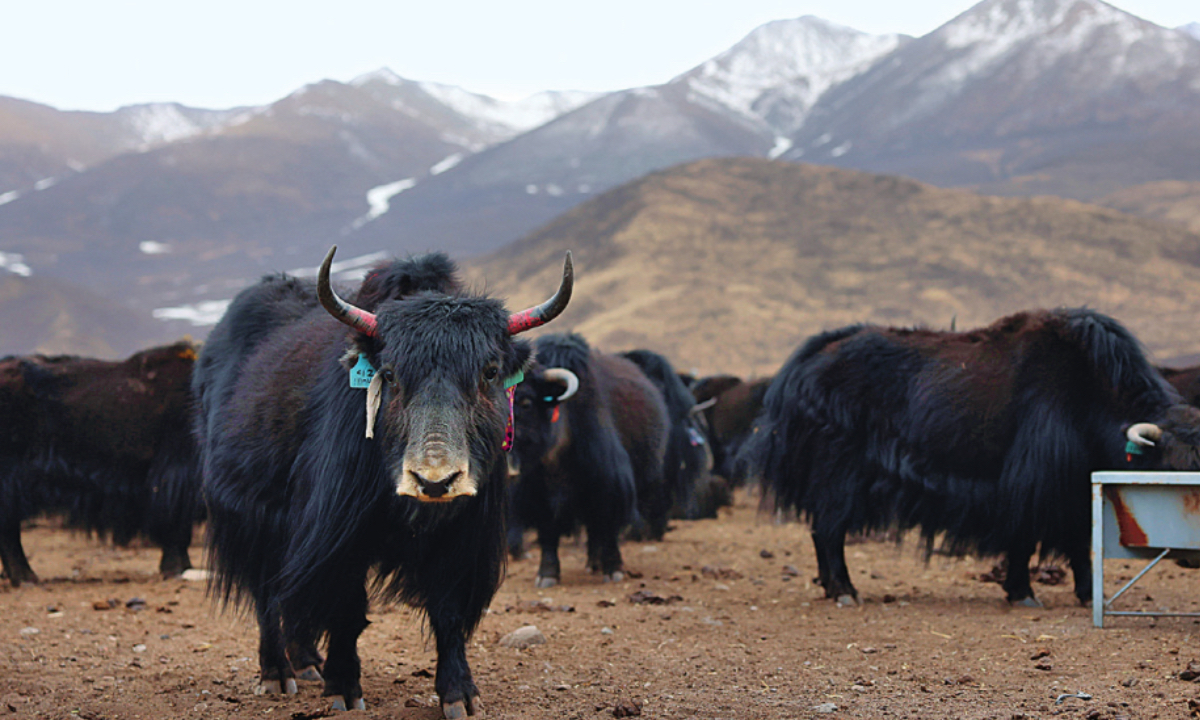
Photo: Xinhua News Agency
The inhabitants of the southern Qinghai-Xizang Plateau had engaged in crossbreeding of yak and cattle in the high-altitude region at least 2,500 years ago, a new archaeological study showed. The study has provided genetic evidence for further exploring the domestication of yaks and the high-altitude adaptability of cattle, according to as report by the Xinhua News Agency on Friday.
The findings, published under the title: "Evidence for early domestic yak, taurine cattle, and their hybrids on the Tibetan Plateau" were published in the international Science Advance journal on Wednesday.
Researchers from Sichuan University, Northwest A&F University and Washington University in St. Louis conducted the study, collected and analyzed the remains of 193 yaks, cattle, and their hybrids obtained from excavations at the Bangga site in Shannan, Southwest China's Xizang Autonomous Region, dating back between around 2,700 and 2,350 years ago.
In the Qinghai-Xizang Plateau, domesticated yaks, cattle, and their hybrid offspring have been known to facilitate human settlement in extreme high-altitude environments, such as serving as the backbone for high-altitude agriculture, plowing fields and transporting goods and supplying milk, meat, fiber, and dung for fuel.
Archaeologists have unearthed the remains of more than 10,000 mammals from 2015 to 2018, dating back to the period between 3,000 and 2,200 years ago, from the Bangga site, a large-scale and complex prehistoric stone building compound located about 3,750 meters above sea level.
The study presented genetic evidence of hybridization between cattle and yaks in the region, confirming that the cattle in this region carried 12.1% to 19.5% of domesticated yak ancestry. This indicates that the crossbreeding of yaks and cattle was widespread 2,500 years ago, and ancient Xizang people had already exploited the advantages of yak-cattle hybridization at that time, according to the study.
"This study is a successful attempt to combine animal archaeology with genetics," said Lei Chuzhao, a professor at the Northwest A&F University who has engaged in the study, told the Global Times on Sunday. He is also one of the corresponding authors of the paper.
Through genetic analysis, the study established a genetic continuity between the cattle bones unearthed in the Bangga site and those discovered at the 3,900-year-old Shimao site in Northwest China, suggesting a likely introduction of the cattle from the northwestern region of China to the Qinghai-Xizang Plateau during prehistoric times.
This suggested that taurine cattle were likely brought to the Bangga region from northwestern China, according to the researchers.
According to the study, the raising of livestock and the cultivation of barley and wheat at the Bangga site suggest the establishment of a diverse lifestyle integrating farming and raising livestock in the southern Qinghai-Xizang Plateau from 3,000 to 2,000 years ago.
URL: https://www.seeglobalnews.com/read-2855.html